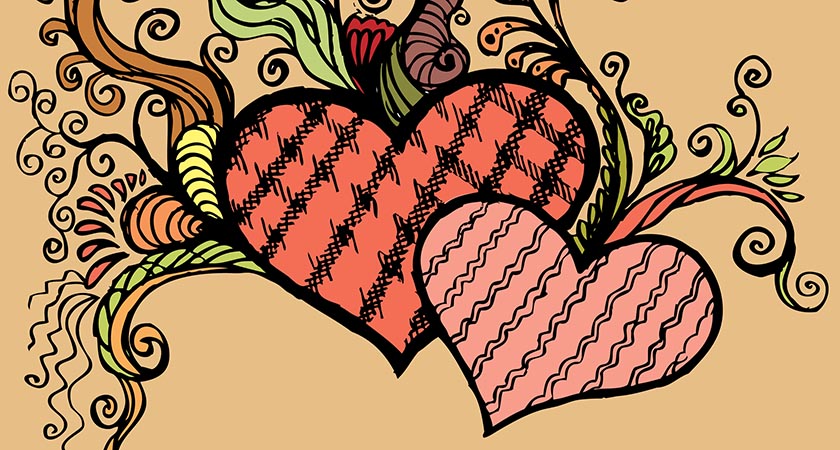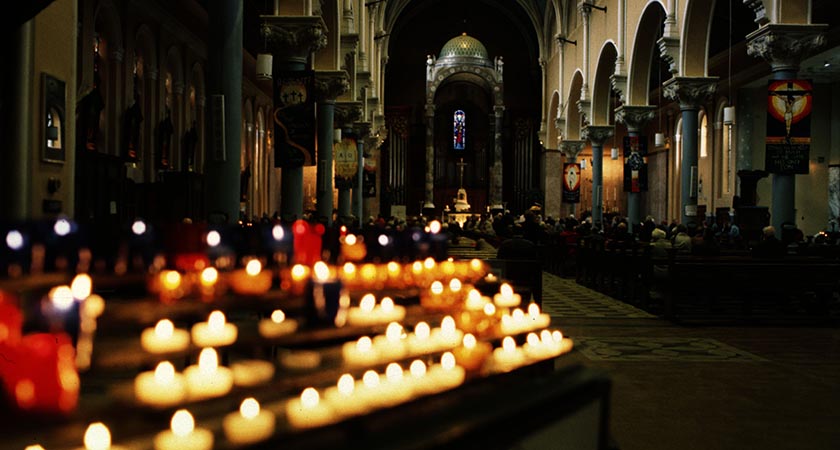ST VALENTINE, saviour of the greetings card industry in that quiet time between Christmas and Easter, was not Irish — it’s doubtful if either Guinness or The Rare Ould Times ever passed his lips. However his bones rest in The Whitefriar Street Carmelite Church, Dublin.
We look at nine facts related to the saint and his feast day...
1. More than one Valentine
There may have been two, or possible three, saints with the name Valentine associated with February - in total there are some 11 saints with the name Valentine venerated in the Catholic Church.
As far as we can make out, both of the February Valentines were martyred. One was buried at the Flaminian Gate of Rome, near what was formerly called the Gate of St. Valentine.
The other St. Valentine - if we assume there were two in this confused situation - was executed by a Roman official, Placidus Furius.
What made the normally placid Placidus furious was that Valentine was secretly marrying loving couples. This was bad news to Placidus's ears because married men make poor soldiers.
This Valentine was duly executed for his clandestine matrimonial duties on February 14.
2. The original Valentine note
Another legend is that Valentine refused to sacrifice to pagan gods.
Being imprisoned for this, Valentine gave his testimony in prison and through his prayers healed the jailer's daughter who was suffering from blindness.
On the day of his execution he left her a note that was signed "Your Valentine".
3. The pagans got there first
Whatever the exact facts of Valentine’s life, the important thing is the day - February 14, the date of a pagan Europe-wide festival called Lupercalia.
This, the last of the winter festivals, boasted levels of craic well in excess of the usual ninety, with gusts up to 140. The Romans celebrated fertility rites, invoking their love goddess, and partied on down.
In time-honoured fashion, this was consequently a good day for the early Christians to bolt on one of their religious celebrations - on a date that was already a holiday, and popular with the locals.
4. The Celts had a hand in it
The romantic element associated with St Valentine's Day probably had its origin in a belief throughout Europe that this time was the time of the year the birds began to mate.
There was an echo of this in Celtic times, and the belief persisted right through to the Middle Ages.
Thus the cult of St. Valentine’s was latched on to this ancient, and often hedonistic celebration.
5. St Valentine arrives in Ireland
Valentine’s journey to Ireland occurred several centuries later.
In 1835 a Carmelite priest called John Spratt, preaching in Rome, made a big impression on Pope Gregory XVI who presented him with the Saint’s bones.
Brother Spratt duly brought Val’s remains back home, as well as a small vessel “tinged with his blood”.
The Reliquary has remained there until this day. It is accompanied by a letter claiming the relics are those of St. Valentine, as well as a papal seal.
And no, it doesn’t say: “Roses are red / Violets are blue / These bones are for you / Dear Sprattie-poo-poo.”
6. The Glasgow connection
The Gorbals in Glasgow isn’t probably the first place you’d associate with romance, but the Blessed John Duns Scotus' church in the Gorbals area of Glasgow, Scotland also claims some of the bones of St Valentine.
Likewise Birmingham - a gold reliquary bearing the words 'Corpus St. Valentin, M' (Body of St. Valentine, Martyr) resides in the Birmingham Oratory.
7. The Italian job
The supposed skull of St. Valentine is exhibited in the Basilica of Santa Maria in Cosmedin, Rome.
Churches in Malta, France, Prague and Vienna also claim St Valentine relics.
But Dublin remains the most widely recognised last resting place of most of St Valentine.
8. The massacre
Probably the most famous event to occur on St. Valentine's in recent history took place in 1929.
The St. Valentine's Day Massacre, linked to Al Capone and his business rivals for the trade in illegal liquor in Chicago, took place at a garage.
The intended victim, Bugs Moran, however was not killed in the bloodbath, having arrived late for the concocted meeting.
Capone wasn't present either and had a concrete alibi. But in all seven associates of the North Side Irish gang were killed.
Despite his absence from the scene of the crime, St. Valentine's Day proved the eventual undoing of Al Capone.
He was convicted and imprisoned on a federal charge of income tax evasion a few years later.
9. Another significant St Valentine's Day
Another event that took place on February 14 was the swearing of the Oaths of Strasbourg in 842AD by Charles the Bald and Louis the German.
A servant called Will of No Stand-Out Feature served them ale.




